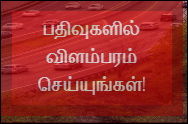 Last week, I went for the Homai Vyarawalla retrospective, currently exhibited in Mumbai. The beautiful black and white photos of a bygone era, captured moments of history in a special way that made you want to see and re-see the pictures. They also told the story of a fiery, gutsy young woman ahead of her time, wielding her camera and immortalising precious instances of political history as India’s first woman photojournalist. Confined to a wheelchair, this nonagenarian belies the spirit that went behind her photographs. What a pity it took 90 odd years for her contribution to be recognised with a Padma award just this year!
Last week, I went for the Homai Vyarawalla retrospective, currently exhibited in Mumbai. The beautiful black and white photos of a bygone era, captured moments of history in a special way that made you want to see and re-see the pictures. They also told the story of a fiery, gutsy young woman ahead of her time, wielding her camera and immortalising precious instances of political history as India’s first woman photojournalist. Confined to a wheelchair, this nonagenarian belies the spirit that went behind her photographs. What a pity it took 90 odd years for her contribution to be recognised with a Padma award just this year!
Pandit Nehru was one of Vyarawalla’s favourites, and he featured in many a picture. Amongst the fascinating collection, I saw a photograph of Pandit Nehru along with artistes Indrani Rehman, Shirin Vajifdar and Yamini Krishnamurti. The photograph had character and I stopped to observe it closely. The people in the picture were completely engrossed in that moment’s conversation. Pandit Nehru had a beatific expression on his face. The dancers in their finery wore a mesmerised expression. Yamini was young, striking, in her prime. My mother had seen Yamini dance in the 1960s, accompanied on vocals by her sister Jyotishmati. So enchanted was she that she vowed to train me in dance — an opportunity that was deprived to her in those days.
The NGMA, where the photo exhibition is currently showing, also brought back memories of Sir C.J. Hall as it was formerly known. As a child, I had gone with my parents to see a young Chitra Visweswaran dance there. It was a no frills stage and the atmosphere was austere. I think Rajaratnam Pillai sang for the recital. He was a fantastic nattuvanar and singer rolled into one.
I searched for more pictures of musicians or dancers, but unfortunately this was the only one. It is not often that one comes across photos of performers that speak, freezing a musician’s rapture, or a dancer’s emotions. I met Avinash Pasricha in the early nineties. I had by then already known him through his remarkable pictures of musicians and dancers that made me sit up and take notice. During recitals, he remains unobtrusive, hidden from view and then comes up with stellar photos that arrest your attention. It takes just a look to tell an Avinash shot amongst several others. His photograph of M.S. Subbulakshmi, in trance with the accompanist in hazy shadow, is a masterpiece.
It highlights the serenity of the legendary singer, and evokes the intensity of the moment. It also shows action with the blissful expression, semblance of a smile on MS’ face, and the accompanying instrumentalist who’s there and yet not there. With light falling partially on her face and lighting up her diamonds and the folds of her sari, the image is sculpture-like and ethereal.
I have heard several live concerts of MS. This is one picture that makes you feel you are there and listening to the ever fresh MS; you can almost hear her sing. But of course, MS wasn’t one single photographer’s privilege, being the universal icon that she was. I have seen some of Raghu Rai’s brilliant pictures too of musicians. Why is it so difficult to get good pictures of performers? In concerts, some photographers appear out of nowhere, frenetically click a few pictures for a few minutes and then walk away. Their prime objective seems to be to take pictures of the sponsors’ banners. I think they are commissioned for that. In between, there are apologetic pictures of the performance. Sadly, the vantage point for some of these photographers is right in front of the musicians on the stage. Result: some of the most non-artistic photographs ever.
Vyarawalla retraced history through an old time Rolex, often clambering on to boxes and other props to get her wonderful shots. Today, we have all the technical expertise and equipments that could ever be dreamt of. Would that alone suffice? Capturing vital emotions, freezing a dancer’s moves without mutilating the poses, compelling the viewer to want to see the pictures again, that would be a work of art. An artiste’s perspective, sensitivity and patience are important hallmarks.
One cannot produce lovely photographs by jumping into a concert and leaving in a few minutes. You need to wait, watch, and listen for emotions to rise, for the crescendo to mount, to capture the right moment. Out of hundred shots may be one would be the immortal piece.
I wish we could have a retrospective of music and dance photographs. We set great store by recordings and videos. Photographs are equally important documentation.
Of course, before I sign off, I must thank Avinash for sharing his lovely photograph when I asked him, without the least hesitation. Thank you Avinash!
Dr Vasumathi Badrinathan is an eminent Carnatic vocalist based in Mumbai. She can be contacted on
இந்த மின்-அஞ்சல் முகவரி spambots இடமிருந்து பாதுகாக்கப்படுகிறது. இதைப் பார்ப்பதற்குத் தாங்கள் JavaScript-ஐ இயலுமைப்படுத்த வேண்டும்.



 பதிவுகள். காம் மின்னூல் தொகுப்புகள்
பதிவுகள். காம் மின்னூல் தொகுப்புகள் 










